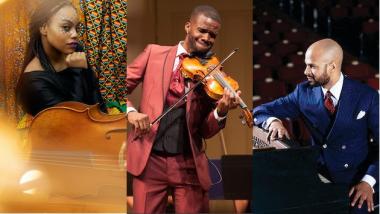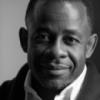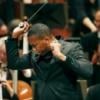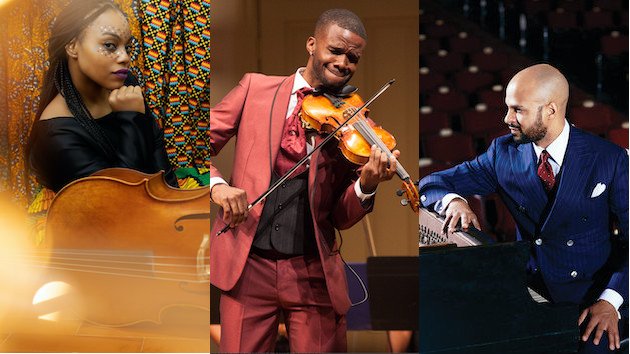
Tossing and turning like an insomniac, fitful conversations about the sustainability and accessibility of classical music have — like all else during the pandemic and protests against racial injustice — intensified. With musicians from all over the map scrambling to find footing online, it’s easy to overlook a problem down the road: how will musicians whose careers are starting now or are in the middle stages of building one, attain the notoriety that leads to greater things?
This is especially a problem for Black classical musicians who have traditionally been less than welcome in major classical institutions. As always, though, the musicians themselves are not waiting around for someone else to provide answers. Pianist Barron Ryan, violinist Lee England Jr., and cellist Dara Hankins are all classically trained Black musicians, but in no way occupy a one-size-fits-all approach or monolithic position. The way they’ve carved paths for themselves shows their personal resilience and offers a ground-level lesson on how the arts are going to survive the pandemic.
Barron Ryan
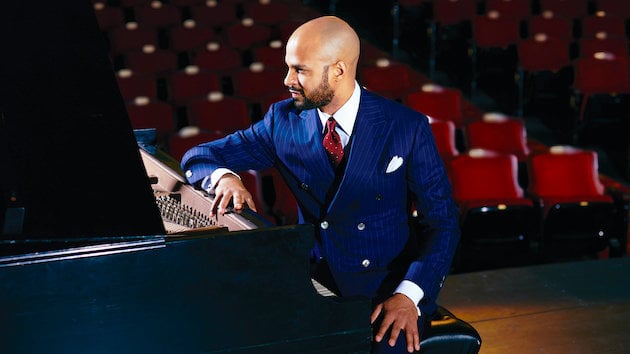
Tulsa, Oklahoma is home base for Barron Ryan, 33, whose parents are both musicians, His father is noted pianist Donald Ryan and forms half of the father-son duo Ryan and Ryan. In Barron’s childhood home, the sounds of classical music, jazz, pop, funk, and hip-hop were common, and led Ryan to earn a degree in piano performance at the University of Oklahoma. But when he sought further training at elite music conservatories, he was rejected. The experience made him believe “I’m not too good at classical music.”
Shortly thereafter, Ryan won Oklahoma Israel Exchange’s 2011 Young Artists Competition. The subsequent concert tour to perform classical programs in Israel fired the dual engines that have made him, in 2020, a sought-after motivational speaker and producer of his two “Classic-Meets-Cool” albums (Classical with Attitude, featuring jazz- and ragtime-inspired concert music, and The Masters’ Apprentice, a collection of solos from great jazz pianists).
Working on a new album, First of Its Kind, Ryan says the three albums are the “byproduct” of trauma. The debut album was a response to grad school rejection; his second was completed only after battling through tenosynovitis. The painful condition involving inflamed tendons in his left hand, developed while perfecting the left hand’s 18-inch keyboard journey back and forth between keys to play quarter notes at a rate of six times per second in Art Tatum’s Tiger Rag. Misapplied physical tension left him with an injury requiring two years to overcome. The new album includes original music written entirely by Ryan, which means judgement and potential trauma lurks in the response he receives for the classical-meets-funk, jazz, pop compositions.
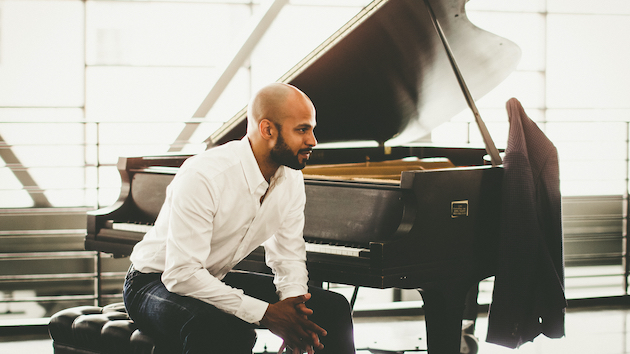
“So much of my childhood revolves around music,” he says, reflecting on becoming a musician. “We had friends who took a keen interest in exposing me and my sisters to music and performances and art. I remember seeing a Japanese Taiko drumming group. I was absolutely transfixed. I was overwhelmed with how cool that performance was. Not long after, I went to see Stomp [the dance-and-percussion mega-hit that was created at the Edinburgh Fringe Festival, moved to the West End, and now has logged more than 10,000 performances over 25 years at the Orpheum Theater in New York, as well as dozens of touring companies]. My first instrument was actually drums and not piano. You could imagine a 3-year-old boy watching Stomp. It changed my perspective. I went home and practiced on my mother’s pots and pans. They have a part where they play using brooms and I tried that out. Although one person with one broom; it’s not quite as effective.”
Even so, Ryan recognized the wonder of creating art and decided his job was to “hit the floor running and remain in awe at the skill and temperament I saw.” He paid no attention to whether or not the musicians he admired were Black, but says he already had a close example in his father, who is Black, and never felt during childhood that he couldn’t also become a performer. During his experiences as a young musician and even today, he says racists’ responses, if they happen, weren’t and aren’t overt. “I tend to see things with ignorance,” he admits. “I never sensed in my performing that I was discriminated against or the audience had a bias against me.” Later, while speaking about the need to increase diversity in classical music, he adds, “It need not be dependent on the race of the person hearing it or creating it. The focus should be on the inspiration of wonder in the audience.”
The pandemic has obviously bumped his usual connection with audiences off course, but it has not derailed his can-do vision. “What I thought I was going to be doing this year and what I am still doing, is bringing the influence of 20th- and 21st-century American music to classical music. I’m not claiming that hasn’t been done before, but not in the way I’m doing it. I hadn’t heard much of classical composers incorporating music I grew up with: blues, soul, calypso from Trinidad, where my father’s from. Why can’t classical composers use this influence and create works that are breaking new ground based on music people are already listening to? I grew up with ’50s and ’60s music and pop and hip-hop on radio. I see no reason why classical music can’t use those traditions, and I am positioning myself to bring those two worlds together.”
While working on the new album, Ryan is making videos featuring technique tips or covers of pop songs approached with classical-music sensibility. “The best music has you paying close attention to it. You keep listening to it and finding new things in it. Classical is wonderful at that,” he says. But he also recognizes personal interests. He admits that from age 2, he has held the minority position of “preferring instruments to hearing people sing.” Balancing audience interest, using vocal music as a base and adding the visuals of video has sparked new creative juice that serves as a link to his all-instrumental music and expands his listening base online.
“People who might not be interested in hearing a Mozart symphony in a concert hall, or another space, will hear music they already know. Hip-hop, funk. As much as the word is overused, it makes classical music ‘accessible.’ Because hip-hop is not classical music, that doesn’t mean we shouldn’t play it. To me, there’s no musical influence that should be disallowed. Everything should be fair game.”
And if everything is fair game? Ryan says people are more likely to form common bonds and hold different viewpoints without hatred. “Different influences are important not because of skin color but just because they’re different from each other. I hope people find me interesting because I have something to say and to listen to. I want that to be primary: more important than whatever physical makeup I happen to have.”
Lee England Jr.
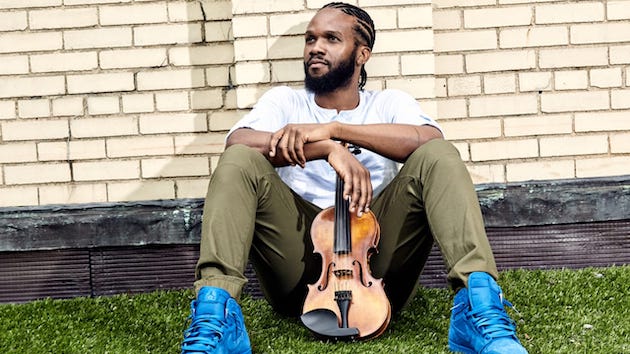
In a TEDx talk, England says his father persuaded him to practice the violin by promising that he could quit if he just did 15 minutes a day. Flash forward to 2020 and the 36-year-old, who was an elementary school music teacher before “dropping out” at age 25, has become a multi-instrumentalist, singer, songwriter, and activist and is known as the “The Soul Violinist.” Blending R&B, hip-hop, and soul with classical training and compositions, he gained recognition on MTV and went on to tour with R&B singer K’Jon, including a 2010 performance at K’Jon’s All-Star Weekend for Michael Jordan, Spike Lee, Russell Simmons, Dwayne Wade, and Gabrielle Union.
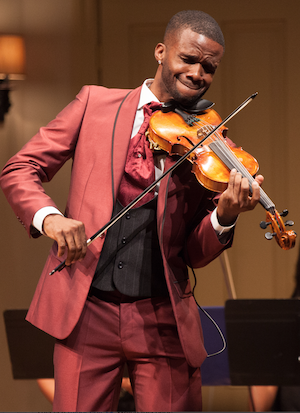
A five-minute solo he performed in the show has led to shoe endorsements, sponsorship from NBA player Michael Jordan, and a commission to compose music for and star in an NFL commercial for Super Bowl XLVI. England was signed by Quincy Jones Productions and calls home base Brooklyn, New York. He also formed and leads The Soul Orchestra and oversees Love Notes, a nonprofit program he launched that provides music instruction and instruments to school-age children. England has bachelor’s degrees in violin performance, in music education, and in audio engineering from Southern Illinois University.
England got hooked on music as a kid by one man at Greater Faith church, in Waukegan, Illinois, his hometown. “There’s definitely a guy, Richard Giggs, an organist I was privileged to sit under. The musicians, that’s what made me want to go to church every Sunday. Although I didn’t become an organist, pianist, drummer, or guitarist, I learned musicianship. The way this guy played, he would do what I learned later is theme and variation. He’d do that for “Amazing Grace.” He’d play it with embellishments, with runs and licks and things that weren’t in the song originally. I remember mimicking him on the violin as soon as I got the opportunity. That sound and style shaped me and my playing for years to come. Giggs went on to tour with Aretha Franklin and he’s on my new project, so that’s a real treat for me.”
Back in his early days, when asked what he wanted to be when he grew up, “professional basketball player” was his eager response. “I said if that doesn’t work, I want to fall back on the violin and make the violin cool. I understood the violin wasn’t what my peers and other Black children were doing. It’s not something most people normally choose. I was going to make it cool one day. To not have many role models or influences allowed me to trailblaze without any constraints. There was nothing to live into, so there was never any pressure to be anything.”
Support and “so much love” from his first violin teacher in third grade reinforced his confidence. “I practiced hard, didn’t have private lessons or a big orchestra, but I learned everything she could give me. Years after that, all she did was just pour love into me, pushed me to practice harder than my peers, reinforced how much she appreciated and loved me and wanted me to be successful. By the time I went to teachers without that same mentorship, I had enough love to get through their bad lessons.”
Even so, England experienced overt racism and what he calls “hard lessons” that worked like gasoline on flames. “Those lessons were actually necessary,” he insists. “If I’d been given everything I needed, I wouldn’t have pushed myself. In college I was so rebellious that for my white teacher, a Hungarian violin professor, to tell me I couldn’t do something was exactly what I needed to hear to want to prove him wrong.” Denied solos or other opportunities in college, England wore a tuxedo with tails to orchestra concerts in a direct challenge to the conductor. Dressed in all black, no cummerbund, or tie, and [wearing] boots, jeans, and a baseball cap, the style became his signature garb. He says it’s part of why Jordan hired him as a spokesperson, and his defiance blasted openings in walls.
“I don’t even see those walls. I know they exist in certain structures, but I’ve been able to traverse the wildest terrain. I decided at a certain point that I wanted to put on a show at Carnegie Hall. I crunched the numbers, talked to people, had different ways of doing it. What it boiled down to was a conversation with a friend who said, ‘find out what Carnegie Hall has going on and then create ways where two worlds can collide.’”
He found out that Carnegie Hall is a century-old classical music institution that respects the way music is moving and England’s popularity. Revolutionary change in the classical-music scene that will attract new audiences, he says, “is us believing in diversity and variety. They were saying they were always looking for opportunities and ways to bridge those gaps. I live in that gap.”
When he speaks to young musicians, England emphasizes discipline. Even if they never become professional musicians, he believes passionate pursuit can be translated and transferred. “To have discipline is to have patience with yourself. Perfection is to be sought after but not necessarily obtained. Discipline has afforded me the ability to try something new and be good at it because I’m patient with myself. I say there’s a technique. Don’t reinvent the wheel, but dig deeper, find out what’s been done before, the history, the rules — so you can carve your own path.”
Letting go of preconceived notions — like the conservatory being the only route to a career in classical music — is crucial. He realized Juilliard wasn’t a good fit, despite his talent, and studied independently to discover what placed one violinist above another. Soloist cadenzas and improvisational additions, he decided, were the key spaces for standout performances:
The fact that violin concertos are written out as opposed to improvised on the spot takes away from the musician to own a piece of music. You can play a Mendelssohn concerto and play the same cadenza they’ve been playing for a million years. There’s nothing different vibrant or fresh or alive. Yes, it lives because classical music is an amazing art form, so dense, but it’s not alive. That’s one space where musicians are being cheated. Great musicians of the past were rock stars. I remember a story of when a musician had gotten sick and another musician came up out of the audience in street clothes and finished the concerto, like rock star.”
He asks, “How do you expect a new era of music to create itself and be amazing?” Using the leap from Baroque to Romanticism as an example, he suggests the chord structures and techniques didn’t come from doing what everybody else was doing. “I can add [on] and come up with something new that doesn’t lack integrity, depth, beauty and density. It’s boring to watch everybody to do the same thing. You don’t go to concert to hear certain pieces. [You go because] this person does something so innovative I just have to see it in person. These pianists who can play Chopin and Rachmaninoff to a T? Ask them if they can play how they’re feeling, show some emotion right now. They say no, no, no. Improvisation is an underrated ability some classical musicians scoff at.”
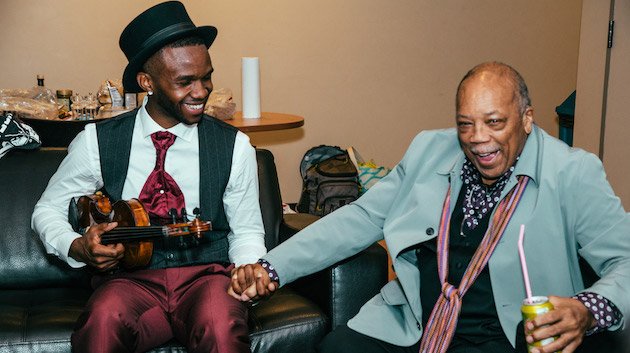
Ultimately, England says he grew up with the iconic soundtracks of Tom and Jerry cartoons that featured Mozart, Beethoven and no words. “My friends listen to classical music and aren’t even aware they’re trained to hear it. I use my imagination and create a world. A world where people are more creative and open. Creating things that don’t already exist, it will make the world larger for everybody else. With music leading the charge in innovation, it would have exponential benefits for society as a whole.”
Dara Hankins
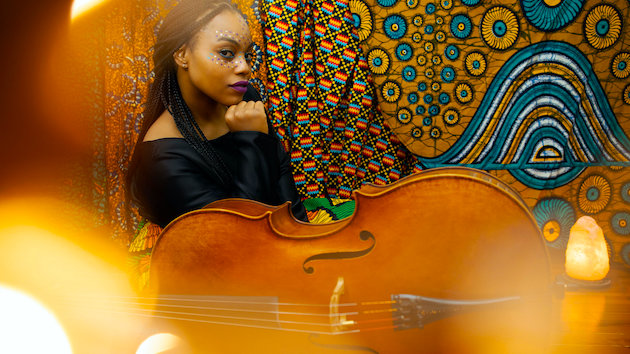
Compared with Ryan and England, Hankins has followed what looks on the surface like the most traditional path. With a Bachelor of Music degree from New England Conservatory in Boston and a Master of Music degree from Manhattan School of Music in New York City, she has performed with Yo-Yo Ma, Branford Marsalis, Joshua Bell, Kirk Whalum, and Lalah Hathaway, among others. She is a cellist with Civic Orchestra of Chicago, the IRIS Orchestra, and an alumna of the IRIS Artists Fellow Program. She teaches in Chicago, Illinois, Virginia, and New York.
Of course, the pandemic continues to disrupt her plans. “It’s surreal that eight months later we’re still in this,” she says from her East Coast home. “Being in New York, there are organizations cancelling major seasons that are a kind of litmus test. Fortunately. I’ve been getting request to do some recordings, but it’s not sustainable for my livelihood.”
To use the extra time and further her work as an activist, Hankins has engaged with Groupmuse, consulting and advising the classical-music concert platform that focuses on increasing diversity in the field. “Just to have a seat at the table, to give input as a person who has experience in the realm of classical music, to give input from my lived experience, has been good.”
Part of that experience includes showing up at a first rehearsal with a well-known orchestra in October 2019 and having a security guard ask for her credentials. “I said I’m here for rehearsal and he said, “I’ve never seen you before and I’ve only seen one other one.” Which meant — it was unspoken — but he’d only seen one other Black person. It’s a majority culture I’m operating in. I just bring my whole self. I’m not showing up as Black Dara, but I am Black and I am in the space. It was really upsetting because it was my first day of rehearsal and there I was, being profiled. There was nobody I felt comfortable processing that experience with. I just had to keep calm and carry on.”
Carrying on doesn’t mean Hankins remains silent. Although she says she’s never been denied opportunities because she is Black, the incident speaks to the larger point of preconceived notions about the appearance and sound of classical musicians. “Historically, classical music is predominantly a white institution and you’re going to bump up against people who project things onto you,” she says. She solves that problem by taking classical music out of hallowed, often exclusionary institutions, and, importantly, diversifying the repertoire. “Great classical music is Bach, Beethoven, Mozart, but also contemporary composers who are creating music today. Playing works by living composers, we are so lucky, and we can ask them questions about their work. What did Beethoven mean by this or that? Well, we don’t know,” Hankin says. “But we can ask Caroline Shaw or Jessie Montgomery or other people who are creating art [now] those questions.”
Hankins knows that broader initiatives to increase diversity and equity must bring more people of color into leading roles in arts administration and boardrooms, dean or faculty positions at music conservatories, and music leaders who will integrate as a stable element of the repertoire works by Black or women composers and other under-represented people groups or styles of music. “Jazz being a Black American art form — some want to call it music as opposed to jazz — to have Black music courses but no Black faculty seems like a blind spot,” Hankins insists. “We should value the community and culture where this American music originates.”
Like England, Hankins believes learning to play an instrument and vocal training builds crossover skills. “Practicing, repetitions, this is how we grow. OK, it’s your first time trying and it’s reasonable you might not have done it perfectly. Failure is an opportunity to learn and problem solve. You grow from there and once you learn it, you don’t have to relearn it. Being a musician is having a mindset of an internal student. Integrating new skills into adulthood is stressful and people outside of music don’t want to do it. So even if everybody doesn’t go on to be a professional musician, they will have excellent life skills for functioning in society.”
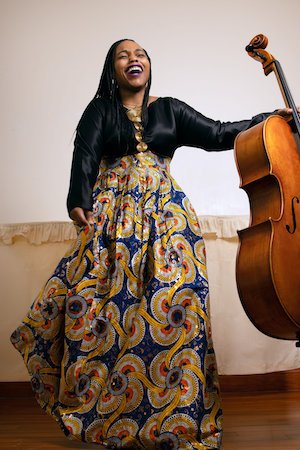
Calling herself a “word nerd,” she says the root of “amateur” is “amore,” or love. And “profession” once meant people could simply profess an occupation to claim it. “I could say “I’m a surgeon,” and that is all it would take.” Passion for creating the best sound on a cello relates in her mind to curiosity — perhaps about indigenous music that, fused with classical music, can create dynamic programs to expand the musicians’ and audience experience. “If we have a myopic view about what is presentable, it’s not having the openness to universal truths gained from relating Bach to Indian Classical ragas. There are definitely threads of continuity there. All good music is good music, the rest doesn’t matter.”
As classical-music institutions pivot to embrace musicians who are people of color and other underrepresented communities, Hankins says the attempts to evolve in conscious, conscientious ways are in an early, explorative stage. “I don’t trust it 100 percent, although it’s inspiring to be making an effort to reach diversity, reaching out to underrepresented groups, and actively working to raise awareness of people of color who are artists and composers. But for a culture change to happen on this scale is going to take time. It’s definitely the time for it to take place.”

